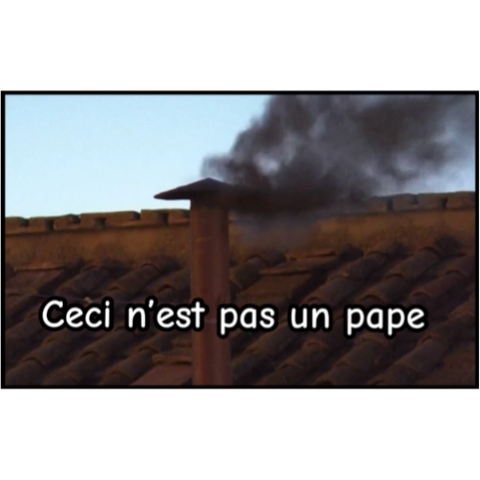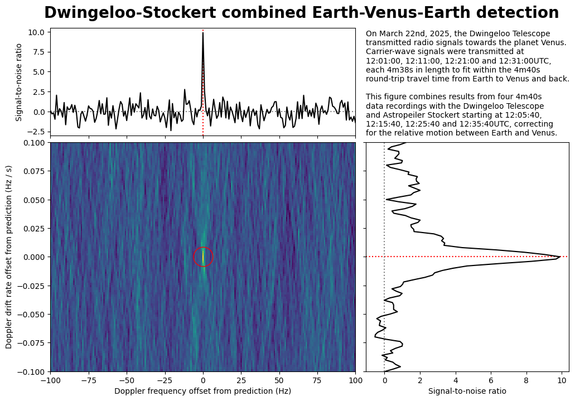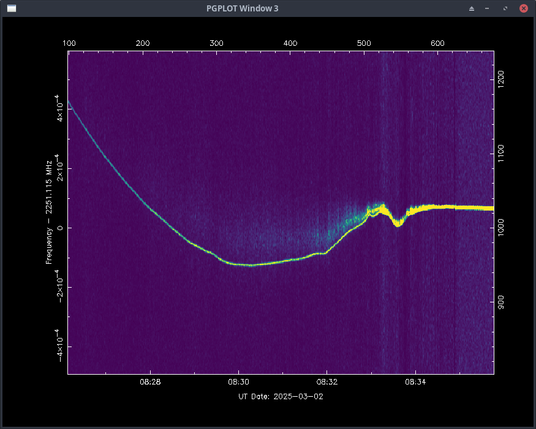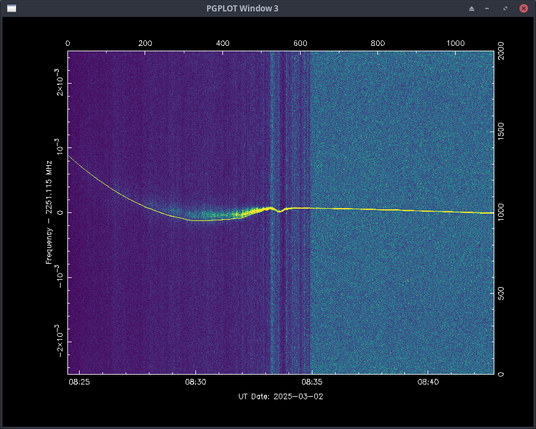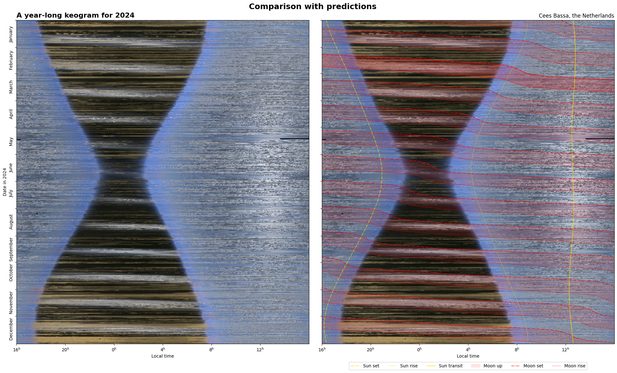Two days too late and perhaps only funny for those speaking Dutch. (H/T Gemma Janssen.)
A bit late, but here is some additional analysis of the Earth-Venus-Earth radar experiments with the Dwingeloo @radiotelescoop from March 22nd, 2025. It takes the 4 recordings at the Dwingeloo and Stockert telescopes and searches in Doppler frequency and Doppler rates for the radar reflections.
The original write up of this experiment is published at https://www.camras.nl/en/blog/2025/first-venus-bounce-with-the-dwingeloo-telescope/ and the data and an analysis script are publicly available at https://data.camras.nl/venus/.
Link budget calculations by @abraxas3d and others can be found at https://github.com/OpenResearchInstitute/documents/blob/master/Engineering/Link_Budget/Link_Budget_Modeling.ipynb.
Many thanks to the volunteers of the Dwingeloo @radiotelescoop and Astropeiler Stockert telescope (in particular @telkamp and @tammojan for making this experiment possible!
First Venus bounce with the Dwingeloo telescope – Dwingeloo Radio Telescope | CAMRAS
As we've seen with other spacecraft near the Moon, we also see reflected radio signals from the lunar surface as the fuzzy signals above the carrier signal from 08:26 to 08:33UTC. When the velocity of the spacecraft decreases, these signals merge with the carrier as they have the same Doppler shift.
The zoomed in plot shows the observed line-of-sight Doppler shift during the landing burn, until terminal guidance around 08:32UTC, and the wobble during landing guidance around 08:33UTC. Landing is at 08:34UTC and the Doppler shift then stabilizes as it follows that of the Moon.
While the signal is broadband as it carries data (left plot), squaring the recorded voltages successively reveals carriers (middle and right plots). This is because the data is phase modulated, masking the carrier frequency. Squaring the data removes this and shows the carrier signal.
With the
#BGM-1 lander from
#FireflyAerospace now safely on the surface of the Moon, we've had some time to take a closer look at the
@radiotelescoop 's observation of the
#BGM-1 signal during the landing, which shows several events during the landing sequence. (Thanks to
@tammojan and
@telkamp for helping running the telescope today.)
For those in Western Europe, check out the Western sky right now! There's some green cloud display happening. This is a video of the last 30 mins (19:30 to 20:00UTC). It's unclear to me if these are Northern Lights or some freak Noctilucent Clouds.
Last night at 03:45UTC a Falcon 9 rocket body re-entered the Earth's atmosphere over Europe. My all sky camera caught it breaking up into several pieces and leaving luminous trails. This Falcon 9 launched Starlinks on February 1st, and apparently the upper stage did not de-orbit after launch. Given the size of the upper stage, I would not be surprised if not all debris burned up and some will have impacted the ground.
To clarify what is exactly happening, this figure compares the keogram with predictions for rise and set times of the Sun and the Moon.
Combining the 8.4 million individual exposures (2TB of data) into a single keogram covering the 4 years from 2021 upto 2025 shows the repeated change in length of the night, and also highlights the small differences in sunset and sunrise times due to the eccentric orbit of the Earth around the Sun.
